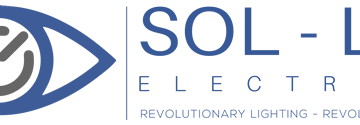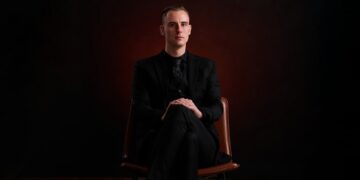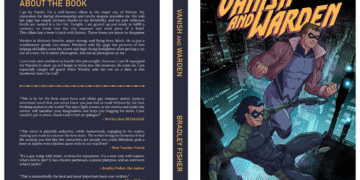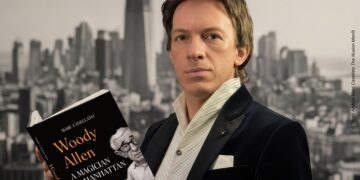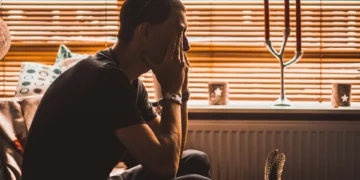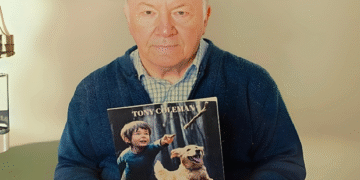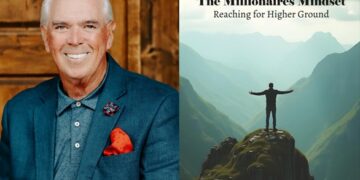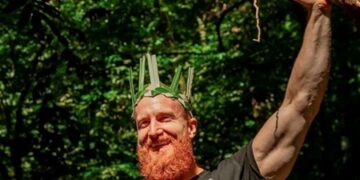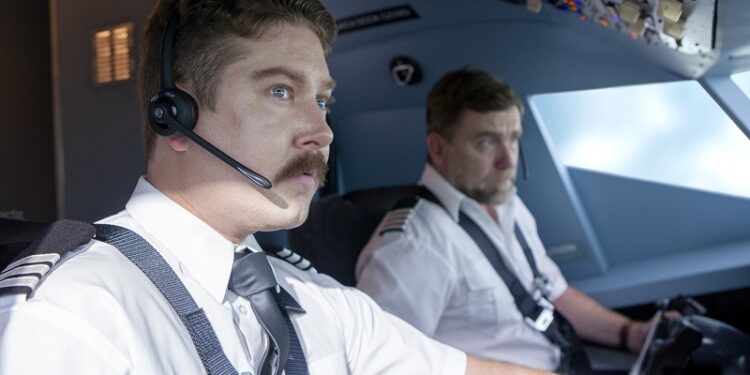Tom Goodall is an award-winning filmmaker best known for his work on hit Disney movies ‘Christopher Robin’ and ‘Lady and the Tramp’. His latest adventure is the film ‘Overpower’ which he wrote, directed, produced and edited. It’s the story of two airline pilots who fight the central computer of a highly automated plane to try and keep it from crashing to the earth. We took a deep dive into the making of ‘Overpower’, which is inspired by true events.
Welcome Tom. You have accomplished so much in your career, and now you can add award-winning filmmaker to that long list of achievements. How did you get involved in the movie?
For this project I served as writer, director, producer, and editor. I wrote this script after hearing about the tragic crashes of the two flights that were brought down by the overpowered flight system on Boeing’s new 737 MAX planes.
Pilots are so incredibly well trained, masters of keeping these massive hunks of metal in the sky and bringing everyone on board down safely thousands of times a day. These planes were designed so that the system could overrule the pilots. I could only imagine the terror and confusion of those pilots who could so easily prevent these accidents, but they were unable because the plane itself was confused. The plane thought they were in danger and, by forcibly trying to save them from themselves, it ultimately killed everyone on board. I knew I wanted to tell a cautionary tale about the dangers of over automation and show how vital the human element is in certain professions, none more so than pilots. I wanted to show how complex and high stakes their job is on any given day, but their training and professionalism means that now most of us don’t think twice about getting in a metal tube with flaps that will hurtle through the sky at nearly the speed of sound, because we know we’re in good hands.
I wanted to show people what these underappreciated professionals do, and how they would endlessly wrestle with the kind of challenges that these over-automated planes present. It involved deep research, into piloting and aviation in general, but also into the transcripts and reports of these very tragedies.
The type of system failures, the pilots’ responses, the speed at which it all happened, is all scarily authentic in this film. I knew the more real it felt, and the more authentic the plane’s design and the pilot’s behavior was, the more effective it would be. That is where this project came from, and recent headlines have shown that the aviation sector has still not learned the lesson.
Can you explain your directorial approach in making the movie?
Every directorial decision you make in planning for a shoot has logistical consequences and this movie had some unique producing and directing challenges. The entire film takes place in a plane cockpit, so you only need to find one location, but it needs to be high quality enough to sustain the entire story, and you need to film it in a way that never feels boring.
What kind of challenges did you face when creating the film?
When making a movie set entirely in a cockpit, you’re presented with some staggering problems to solve. Our plane needed to start still on a runway, take off, fly around, and behave erratically, constantly diving and climbing and turning through the air. Over 180º of the cockpit is windows, and that’s where the actors’ faces are – there’s no avoiding them. Even on a big budget movie this would be a tall order, but it’s exponentially more challenging with a small budget.
In the end, we found a perfect balance of practical and visual effects, to create a high-quality result with a minimal budget impact.
The first consideration is how we’ll put the images outside the windows. While you might expect that we could put up green screens outside every window and simply replace it in VFX later, this would present several issues. For one, we were filming in a plane simulator, which we had chosen because it was already well kitted out with fully authentic plane mechanics. This meant that the space outside the cockpit itself was very small. If we put green screens outside the windows, they’d only be a few feet away at most, meaning that the actors inside the cockpit would have green light spilling on them from outside, and suddenly you’re in a VFX nightmare. It was the simulator though that gave us part of our answer.
Being a simulator, the cockpit had large projector walls surrounding it to show the simulated environments that pilots would fly through. We decided to bring in our own more powerful projectors, and project the backdrops we needed onto the simulator walls. Not only did this mean we rarely had to use VFX because the true images were being captured live outside the windows in camera, but it also meant that the actors could see and react to a real-world simulation of what their characters were experiencing.
This was a game changer, but with one giant hole in the plan – how do we get realistic footage from the sky that perfectly matches what our plane needs to do in this story?
We entertained building these environments with CGI or using existing high-quality flight simulation software to generate these backdrops, but it was never going to look real. That’s when the really fun ideas started flowing. We ended up deciding to hire a tiny 2-person glider plane to be our “stunt plane”.
A trained pilot and I rigged GoPros to the wings of this powered glider, pointing left, right, and forwards. We flew the plane up into the sky, heading close to an exact route that an airliner might use in our story.
We then used the glider to act out everything our story plane would do – climbing towards cruising altitude, experiencing errors, diving, correcting, turning, the whole story. We then stitched those GoPro angles together to create one panorama video that we could project on the simulator walls, so that our actors and our audience would look outside and see a 100% real vista that perfectly told the story of what this plane was experiencing.
But it didn’t end there. While we could do most of the action with the glider, we had 2 more problems to solve: the beginning, and the ending. The film opens with the plane sitting by a runway waiting for clearance to take off, and then rolling onto the runway and taking off into the sky.
Our glider could not do this, for many reasons, the biggest of which being that cameras on a glider will sit about 4 feet off the ground, not quite high enough for a jumbo jet cockpit. It would look obviously close to the ground and ruin the effect.
Putting my producing hat on, I managed to convince the city’s airport to let us drive a car down the runway, and so we created a gigantic extending pole and fixed it to the back of a car, getting just high enough to simulate a plane’s cockpit height.
We attached the GoPros to the pole, stopped the car by the runway, then drove onto the runway and went full ‘Mad Max’.

Once again, when actors and audiences look out those cockpit windows, they’ll see real footage from a real runway in an operating airport. It is perfect authenticity, all achieved with a fast car and a big stick.
And then, there’s the ending [spoiler alert]. As the rogue computer system takes over the plane, it eventually brings the plane crashing down in a field not far from the airport where it started. Apparently crashing the glider was not an option, so we had to think of an alternative.
What we decided on was getting a simple drone, taking it out to a field that looked right, and then filming the crash in reverse. The drone started on the ground, where the shot would end, and then it flew away as fast as it could off into the sky on a sharp angle, keeping its camera looking back down at the spot where it landed. This gave us footage of the ground close up, that then flew away quickly as the drone receded into the sky. In editing, we reversed that footage and manipulated it, so that now the shot starts in the sky but hurtles rapidly towards the ground before making impact. We put that imagery outside the cockpit window and suddenly our tragic ending was a visceral reality.
Creating this flying effect, from start to finish with all its complexity, in a way that looks this real, should have been impossible. But that’s the wonder of movie magic. We made the impossible possible. And affordable.
How can people see it?
You can watch the full film on Short Frame.
How can people connect with you?
People can connect with me on Instagram, or find my work atIMDb or tomgoodall.com
